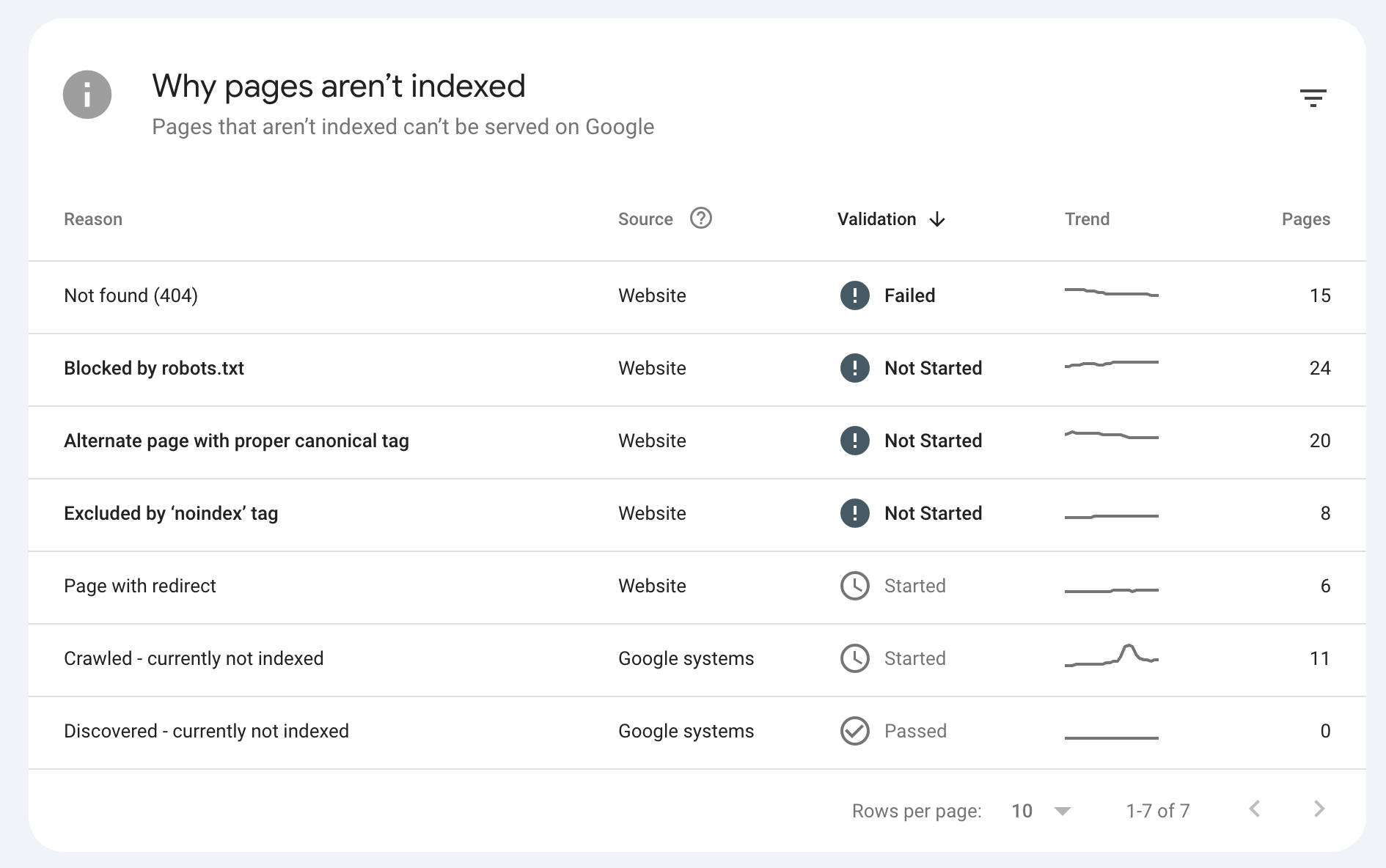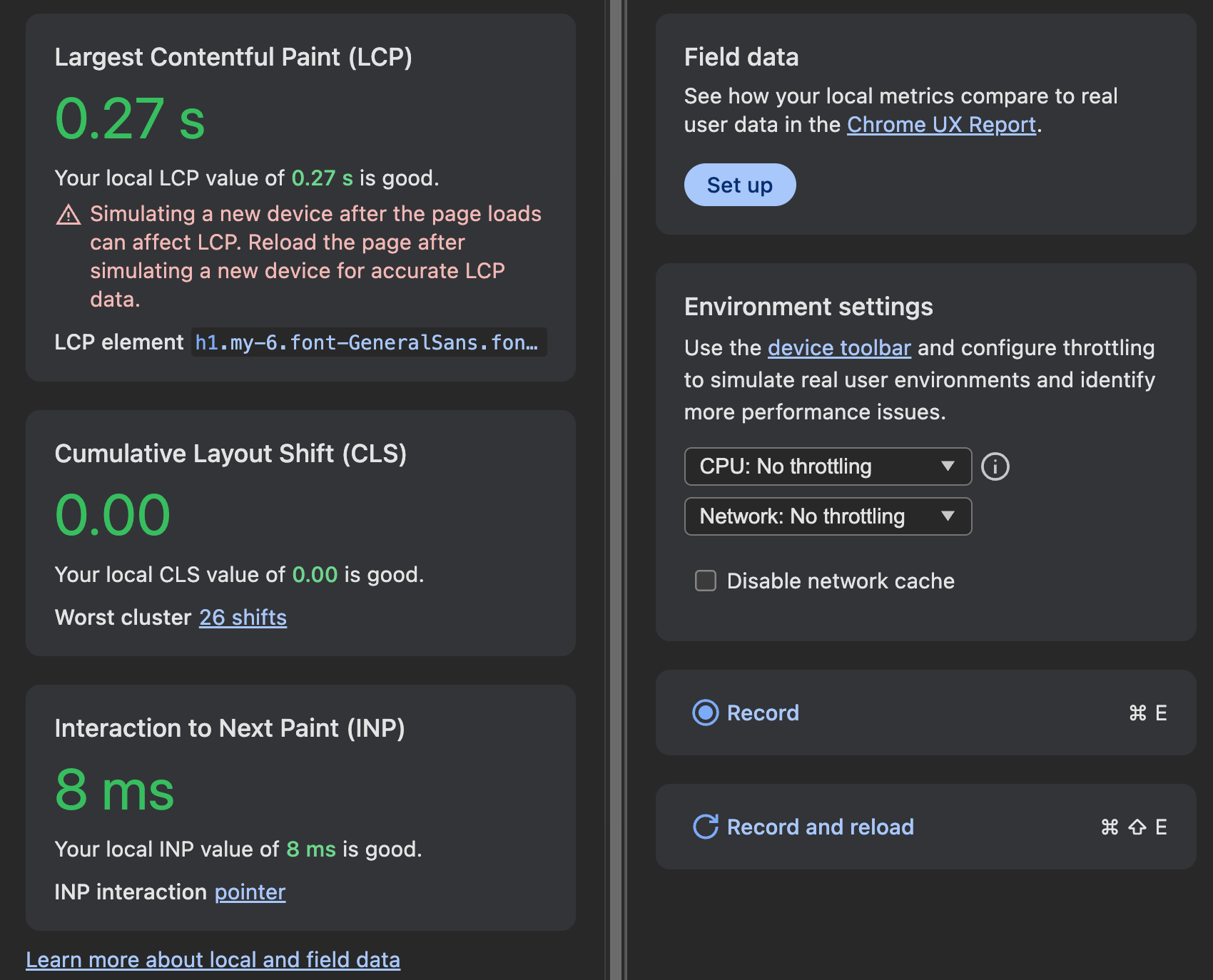
-
 By Hank Teicheira
By Hank Teicheira
A technical SEO audit is a comprehensive process to ensure your website is accessible, understandable, and indexable by search engines. Without a solid technical foundation, even the best content may struggle to rank, drive traffic, or convert visitors.
Bottom line: If search engines can’t properly crawl and understand your site, your rankings (and revenue) will suffer. That’s why a technical SEO audit is important.
Start With Google Search Console (GSC)
Google Search Console (GSC) is your mission control for technical SEO. It’s a free tool that helps you monitor, maintain, and troubleshoot your site’s presence in search. Sign up and verify your domain there.
How GSC powers your SEO health check
- Shows which pages are indexed vs. excluded
- Flags crawl errors, server issues, and mobile usability problems
- Tracks Core Web Vitals like LCP and INP
Indexing (Coverage) Report

Where to find it: Indexing > Pages What it shows: Pages that are indexed, excluded, or valid with warnings
Click into each category to investigate. Common reasons pages are excluded include noindex tags, duplicate content, or server errors. Knowing what to look for in a technical SEO audit often starts here.
URL Inspection Tool
Use this to spot-check individual pages. It reveals:
- Last crawl date
- Indexing status
- Detected enhancements (like structured data)
Crawl Stats
In Settings > Crawl Stats, see how often Googlebot visits, how much data it pulls, and if your server response times are stable. Many site owners try a DIY SEO audit by first exploring these stats before hiring experts.
Review Your Site Architecture & Internal Linking
A critical part of any technical SEO audit guide is evaluating how your site is structured.
Checklist for healthy architecture
- Important content reachable within three clicks of the homepage
- No orphan pages (use tools like Screaming Frog or Sitebulb to find them)
- Internal linking passes authority to key pages
- Navigation and breadcrumbs clearly reflect site structure
Tip: Map your site with a tool like GlooMaps to spot excessive depth or disconnected pages.
Manual QA: Templates, UX, & Dynamic Features
Even the best tools miss things. As part of your SEO crawl audit, manually test key templates.
What to do
- Visit homepage, category, product/service, and blog templates on desktop and mobile
- Look for overlapping text, broken grids, or missing content
- Test forms and make sure dynamic elements (like tabs, filters, carousels) load properly
Here’s the kicker: A technically flawless page that confuses or frustrates users still drives them away, increasing bounce rates and sending bad signals to Google.
Test Mobile Friendliness
Google indexes the mobile version of your site first. If it’s broken on mobile, you’re in trouble.
How to check
-
Run the Google Mobile-Friendly Test on your key pages
-
Manually test on multiple real devices
-
Make sure your viewport is set:
-
Check mobile Core Web Vitals in GSC
Site Speed & Core Web Vitals
Speed is a major Google ranking factor — plus it shapes user trust and conversion rates. Google’s web.dev case studies highlight how Flipkart, by focusing on Core Web Vitals improvements, achieved a 2.6% reduction in bounce rate.

Key metrics for 2025
- Largest Contentful Paint (LCP) under 2.5 s
- Cumulative Layout Shift (CLS) under 0.1
- Interaction to Next Paint (INP) under 200 ms (replacing FID)
Quick wins to improve speed
- Compress and convert images to WebP
- Lazy-load offscreen content
- Minimize JavaScript blocking
- Explicitly set image dimensions to reduce CLS
Use PageSpeed Insights, Lighthouse, and GSC’s Core Web Vitals report to diagnose and track improvements. This is also a core part of any DIY technical SEO audit.
HTTPS (SSL Certificates)
SSL encrypts data and prevents browsers from flagging your site as “Not Secure.” Google’s used HTTPS as a ranking signal since 2014.
Best practices
- Install SSL via your host
- Force HTTPS with 301 redirects
- Ensure your sitemap and canonical URLs use HTTPS
Leverage Structured Data (Schema)
Structured data (or schema) gives Google more context about your content and enables rich results—star ratings, FAQs, product prices—that can dramatically improve your click-through rates.
Where to use it
- Organization or LocalBusiness for business info
- Product schema for ecommerce
- Article, FAQ, or HowTo for blogs
- BreadcrumbList and Review to enrich listings
Validate your schema with:
Canonical Tags & Duplicate Content
- Check with Screaming Frog, Sitebulb, or Ahrefs Site Audit
- Ensure filtered or duplicate pages point to the primary version
Advanced Code QA: Broken Links, hreflang, Meta & Server
- No broken internal or external links (404s)
- Unique meta titles and descriptions on each page
- hreflang tags properly set for multilingual sites
- Server returns clean 200 and 301 responses, avoids long redirect chains
Tools for Your Technical SEO Audit
Tool | Best for | Free? | Notes |
|---|---|---|---|
Google Search Console | Indexing, coverage, CWV | Free | Direct from Google. |
| Screaming Frog | Crawling, links, meta, schema | Free up to 500 URLs | Paid unlocks advanced. |
| Ahrefs Site Audit | Deep crawl + backlink data | Paid | Excellent for competitive sites. |
PageSpeed / Lighthouse | Speed & Core Web Vitals | Free | Lab + field data combined. |
| Sitebulb | Crawl visuals, architecture | Paid | Great for crawl budgets. |
| Schema.org Validator | Schema syntax checks | Free | Complements Google tools. |
How Many Times Should You Audit Your Site for SEO?
- Small business / local site: every 6 months
- Active blog or content-heavy site: every 3–4 months
- Large ecommerce / media site: monthly
- After redesigns, migrations, or Google updates: immediately
Doing this regularly ensures you control your SEO audit cost by fixing problems early, instead of paying later for emergency fixes.
Why a Technical SEO Audit Matters
A robust technical foundation ensures Google can crawl, index, and trust your site—so your content and marketing efforts actually perform. This is what every SEO audit consultant is hired to secure. Especially after Google’s 2025 updates prioritizing speed, structured data, and overall site quality, technical SEO is non-negotiable.
Ready to Level Up Your Site?
Download our free technical SEO audit checklist and start uncovering crawl, index, and speed issues today. Prefer expert support? Contact us for a free mini audit, we’ll highlight your top five technical SEO opportunities within 48 hours and give you a glimpse of a typical SEO audit report sample.